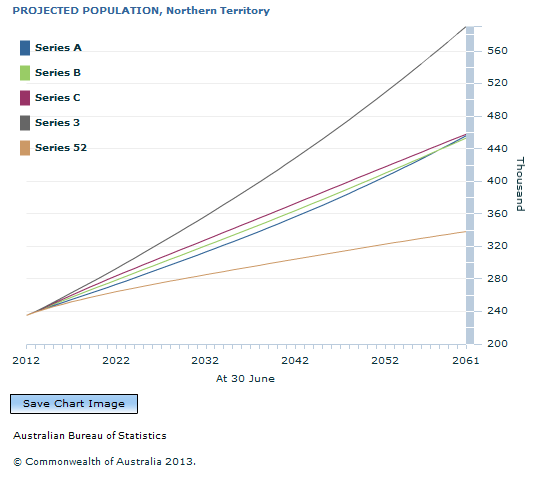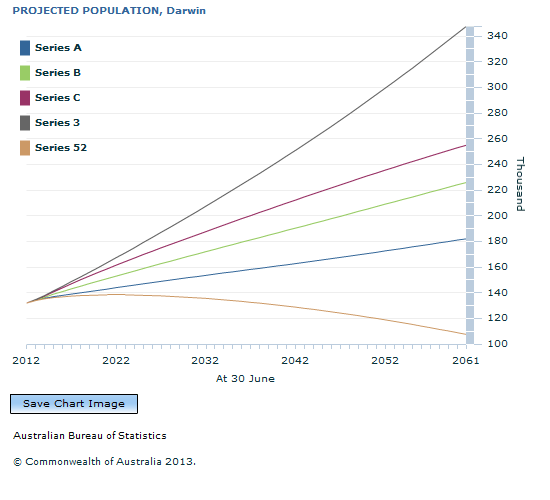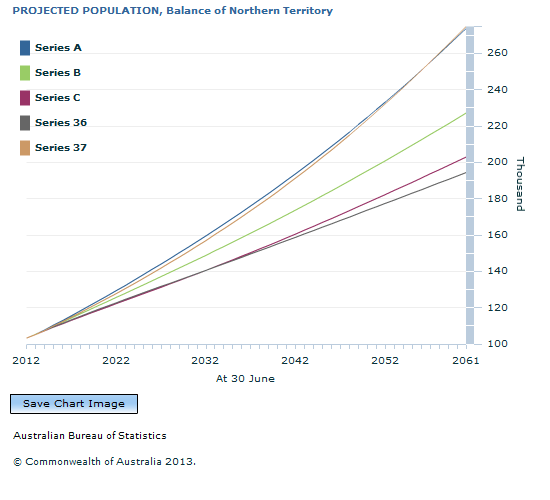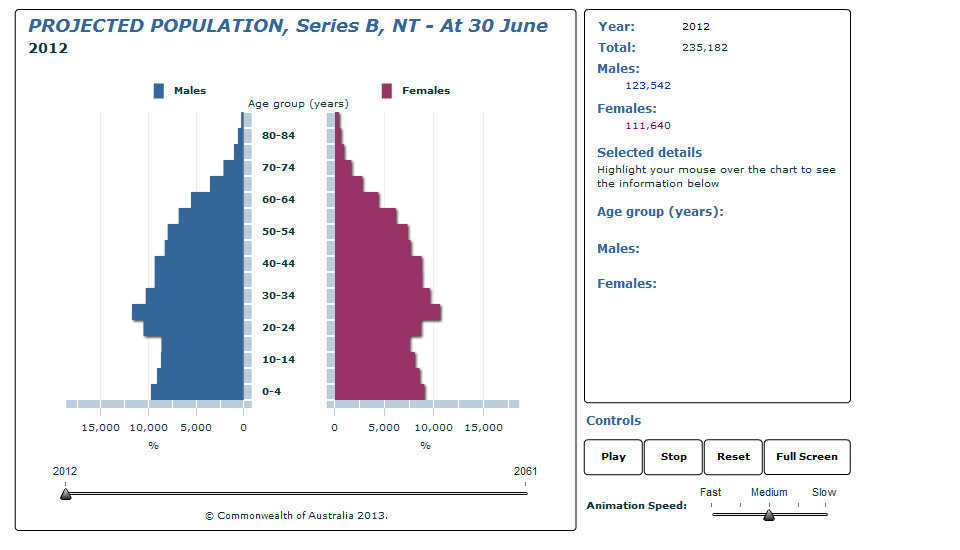Page tools:
 Print Page Print Page
 Print All Print All
| ||
|
Population size Series C projects the largest population for the Northern Territory, increasing from 235,200 people at 30 June 2012 to 457,800 in 2061. Series A projects an increase to 455,700 in 2061, while the smallest population is projected in Series B (453,000). From 131,900 people at 30 June 2012, Darwin's population is projected to increase to between 182,000 (Series A) and 254,800 (Series C) in 2061. Population growth in the balance of the Northern Territory will be larger, rising from 103,200 people at 30 June 2012 to between 203,000 and 273,700 in 2061. Age/sex structure The age structure of the Northern Territory is significantly different to other states and territories, with a median age of 31.5 years at 30 June 2012 (compared to 37.3 years for Australia). Due to comparatively high assumed fertility levels, the Northern Territory is projected to experience considerably less ageing of the population than other states and territories, with the median age increasing to between 34.2 years and 37.6 years in 2061. The graph below presents the age structure for the Northern Territory in 2012 and 2061. Births and Deaths In 2011-12, there were 4,000 births and 1,000 deaths in the Northern Territory, resulting in natural increase of 3,000 people. In all series, births will continue to exceed the number of deaths during the projection period, resulting in a natural increase. In Series A, natural increase will steadily rise, in Series B natural increase will slowly rise, while in Series C natural increase will decline, but remain positive over the projection period. Alternative scenarios to Series A, B and C The combination of assumptions in Series 3 results in the largest population for the Northern Territory in 2061 (590,000 people). This is due to the negligible interstate migration assumed for the Northern Territory (a net of zero) in this series. Conversely, Series 52, which assumes the greatest interstate migration losses for the Northern Territory (a net –2,000 people per year) projects the smallest population by 2061 (338,300 people). Similarly, Series 3 projects the highest population for Darwin (347,300 people in 2061) and Series 52 projects the smallest population (107,600 people). Document Selection These documents will be presented in a new window.
|
|
3222.0 - Population Projections, Australia, 2012 (base) to 2101  Quality Declaration
Quality Declaration
ARCHIVED ISSUE Released at 11:30 AM (CANBERRA TIME) 26/11/2013
This page last updated 21 November 2018




